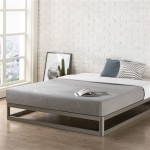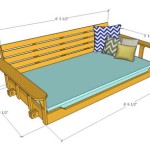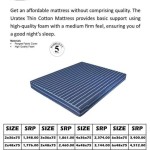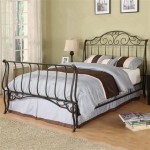Essential Aspects of King and Queen Size Beds for a Comfortable Night's Sleep
When it comes to choosing the right bed size, the designations "king" and "queen" represent two of the most popular options. Each offers unique advantages, making it essential for individuals to consider their sleeping habits, space constraints, and personal preferences when making a decision. The following exploration dives into the fundamental aspects of king and queen size beds to help you find the perfect match for a blissful night's rest.
Part of Speech: Noun
Both "king" and "queen" are nouns in this context, representing specific sizes of beds.
Dimensions
The primary distinction between king and queen size beds lies in their dimensions. In the United States, a standard king size bed measures 76 inches wide by 80 inches long, while a standard queen size bed measures 60 inches wide by 80 inches long. The extra width provided by a king size bed makes it an ideal choice for couples who appreciate ample space to stretch out and sleep comfortably.
Mattress Thickness
In addition to length and width, the thickness of a mattress can vary, adding to the overall profile of the bed. Most mattresses range in thickness from 10 to 16 inches, with thicker models offering additional support and comfort. When selecting a mattress to pair with a king or queen size bed, consider your personal preference for firmness, as well as your height and weight.
Height of Bed Frame
The height of the bed frame is another important factor that contributes to the overall comfort and aesthetic appeal of a bed. Bed frames typically come in a range of heights, from low-profile frames that sit close to the ground to taller frames that provide increased elevation. The optimal height depends on personal preferences and the desired visual effect in the bedroom.
Headboards and Footboards
Headboards and footboards are optional features that can be added to a bed frame to provide additional support, comfort, and style. Headboards can help to elevate the head and support the neck, while footboards can prevent pillows and bedding from falling off the foot of the bed. The design and materials of headboards and footboards can vary widely, allowing you to customize the look of your bed to match your personal taste.
Bedding and Linens
The size of your bed will also determine the size of bedding and linens you need. King size beds require king size sheets, blankets, and comforters, while queen size beds require queen size linens. Choosing high-quality bedding fabrics can significantly enhance your sleep experience and ensure a comfortable and restful night's sleep.
Conclusion:
Understanding the essential aspects of king and queen size beds is paramount when making an informed decision for your bedroom. By considering factors such as dimensions, mattress thickness, bed frame height, headboards and footboards, and bedding requirements, you can create a personalized sleep sanctuary that meets your unique needs and preferences. Whether you prioritize ample sleeping space, luxurious comfort, or a stylish aesthetic, there is a king or queen size bed that is sure to provide the perfect night's sleep.
.jpg?strip=all)
King Vs Queen Size Beds Differences Comparison And Benefits

King Vs Queen Bed What S The Difference Amerisleep

King Bed Vs Queen B2c Furniture

The Difference Between A Queen And King Bed Bedinabox

King Size Vs Queen Beds What Is The Difference Beautiful Homes

King Vs Queen Bed Size Mattress What Is The Difference Nectar Sleep

King Vs Queen Size Mattress Dreamcloud

King Bed Vs Queen Snooze

King Vs Queen Size Beds Differences Comparison And Benefits

What S The Difference King Vs Queen Bed







